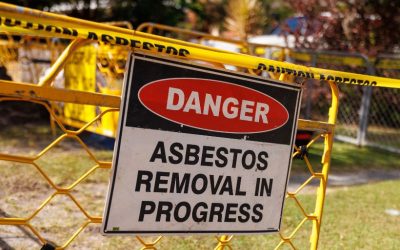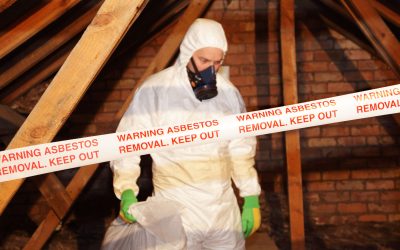Asbestos, once praised for its versatility and fire-resistant properties, has left a devastating legacy. Despite its ban in many countries, including the UK, asbestos exposure continues to pose significant health risks, particularly in older buildings and certain industries.
In this blog, we’re exploring the chronic health issues associated with asbestos exposure, including mesothelioma, asbestosis, and lung cancer. We’ll also look at the importance of awareness training, robust policies and procedures, and fostering a strong health and safety culture to mitigate these risks.
What is Asbestos?
Asbestos is a group of naturally occurring fibrous minerals known for their durability, resistance to heat, and insulating properties. There are six types of asbestos fibres, all of which are composed of long and thin crystals. Each fibre is made up of many microscopic “fibrils” that can be released during the handling, disturbance, or deterioration of asbestos-containing materials.
Asbestos materials were widely used in construction, automotive, and manufacturing industries until its health risks became evident. As exposure occurs primarily through inhalation of airborne fibres, which can easily be released in the activities of workers, asbestos-related disease is a major concern for these industries. These microscopic fibres, otherwise known as asbestos dust, can become lodged in the lungs and other tissues, leading to serious health issues over time.
Chronic Health Issues Associated with Asbestos Exposure
Approximately 40% of work-related deaths in the UK are directly related to asbestos exposure. Here are the main health issues associated with asbestos workers:
Mesothelioma
Mesothelioma is a rare and aggressive cancer that primarily affects the lining of the lungs (pleural mesothelioma) or the abdomen (peritoneal mesothelioma). It is almost exclusively linked to asbestos exposure, with symptoms often appearing decades after initial exposure. Common symptoms include chest pain, shortness of breath, and abdominal swelling.
Asbestosis
Asbestosis is a chronic lung disease caused by inhaling asbestos fibres. Considered an occupational disease because it is specifically linked to those who work around asbestos particles, asbestosis leads to lung tissue scarring (fibrosis). Symptoms include shortness of breath, persistent cough, and chest tightness. Asbestosis can progress over time, resulting in severe respiratory issues and reduced quality of life.
Lung Cancer
Asbestos exposure significantly increases the risk of developing lung cancer. The risk is worse for smokers exposed to asbestos, but even the healthiest person can develop cancer by inhaling asbestos fibres. Symptoms typically include persistent cough, chest pain, and weight loss. Early detection and treatment are crucial for improving outcomes.
Importance of Asbestos Awareness Training
Awareness training is vital for anyone who is potentially exposed to asbestos products. Educating employees about the dangers of asbestos exposure and the necessary precautions can make the difference between lifelong occupational diseases and safety.
Training should cover the identification of asbestos-containing materials, safe handling procedures, and emergency response actions in case of accidental exposure. Safety Services offers three online asbestos awareness training courses, each connected to UK trade associations. Our UKATA asbestos training course is our most comprehensive, with the IATP course and ROSPA-approved training right behind.
Given the evolving nature of health and safety regulations, regular training updates also ensure that employees remain informed about the latest guidelines and best practices for asbestos management.
Robust Asbestos Policies and Procedures
If your employees are in danger of exposure in their roles, then developing and implementing comprehensive asbestos management plans is crucial for minimising the inherent risks. These plans should include regular inspections, risk assessments, and protocols for safely handling and removing asbestos-containing materials.
It’s also important to establish clear procedures for reporting and responding to asbestos-related incidents. Prompt action can prevent further exposure or the exposure of other workers and can mitigate health risks. Ensure that all employees are familiar with these procedures.
Ready to Protect Employees from Asbestos-Related Diseases?
The long-term health effects of asbestos exposure, including mesothelioma, asbestosis, and lung cancer, underscore the critical importance of proactive safety measures. Through comprehensive awareness training, robust policies and procedures, and a strong health and safety culture, we can significantly reduce the risks associated with asbestos and protect the well-being of our workforce. Remember, the key to mitigating asbestos-related health issues lies in education, vigilance, and a commitment to continuous improvement.
For more information on asbestos safety and training programs, contact us today. Our team of health and safety experts is eager to help you create a safe and healthy work environment, free from the dangers of asbestos exposure.









